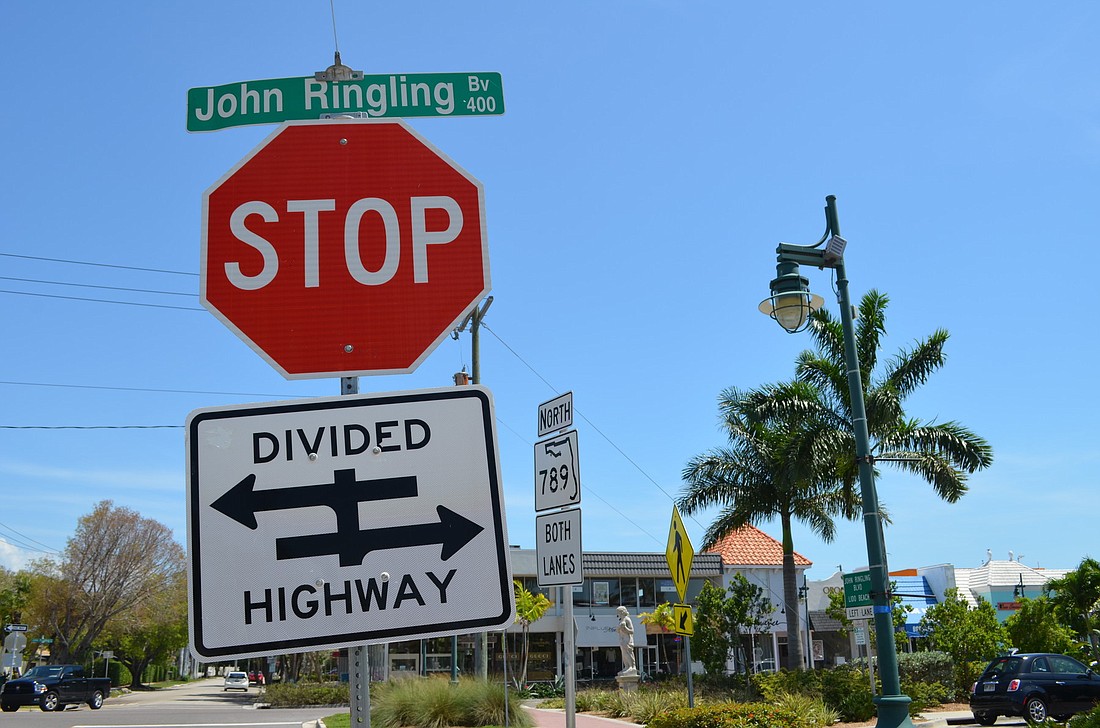- July 26, 2024
-
-
Loading

Loading

When Lou Costa looks at road signs posted throughout the city, he sees something more than a speed limit or a parking restriction — he sees missed opportunities.
Costa’s focus on signage issues dates back to the renovation of Bird Key Park in 2011. A resident of Bird Key and an engineer, Costa was involved in the planning process as the city worked on improving the bayfront area. As part of that project, signs were placed without much thought, he said, resulting in obstructed views for people walking through the park.
Costa has worked to reduce the number of signs in that area and elsewhere. It’s a problem people often overlook, he said, but one that can and should be addressed.
“The potential we have here is just so phenomenal,” Costa said. “The water views are drop-dead gorgeous.”
That’s why Costa is assisting the city’s Urban Design Studio as it writes a form-based code for Sarasota. In addition to dealing with building requirements, the new code will address broader issues — including signage — to create cohesive streets citywide, according to Principal Urban Designer Andrew Georgiadis.
Their work is beginning on St. Armands Circle, one of six catalyst areas the studio is targeting. In these areas, the group is implementing form-based code principles on a smaller scale, serving as an example of what the new code will look like to the rest of the city. While other catalyst areas focus on creating predictable developments, the emphasis around the Circle is on parking, landscaping and signage.
In addition to obstructing sightlines, sign clutter can result in other visual issues. Georgiadis said signs are often conceived of as 2-D objects, but they’re experienced in the round. When lots of signs are posted in one area, people approaching from the back see a mass of gray metal. The studio is working to remove non-essential signs, which Georgiadis said begin to approach a form of permanent littering.
In addition to the unpleasant aesthetics of sign clutter, it also presents a safety issue. If drivers or pedestrians are presented with an overwhelming amount of information, they’re likely to ignore the signs altogether, Georgiadis said.
Georgiadis said you can manage driver behavior such as speeding without signs by building narrower roads and installing landscaping that creates “visual friction” for the driver.
“They’re getting all of those visual clues,” Georgiadis said. “That’s more effective than putting a speed limit sign on every block.”
For Costa, working with the Urban Design Studio lets him more effectively tackle an issue he thinks tarnishes the city.
“I just see the potential of everything we have here, and it was being cluttered with sign pollution,” Costa said.
Contact David Conway at [email protected]